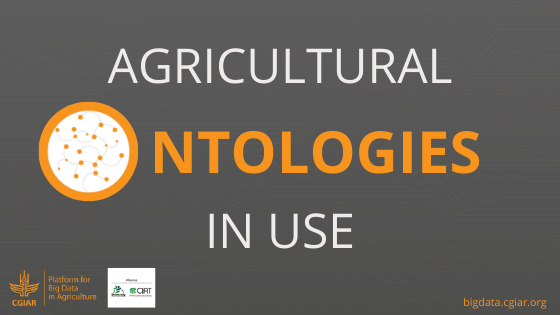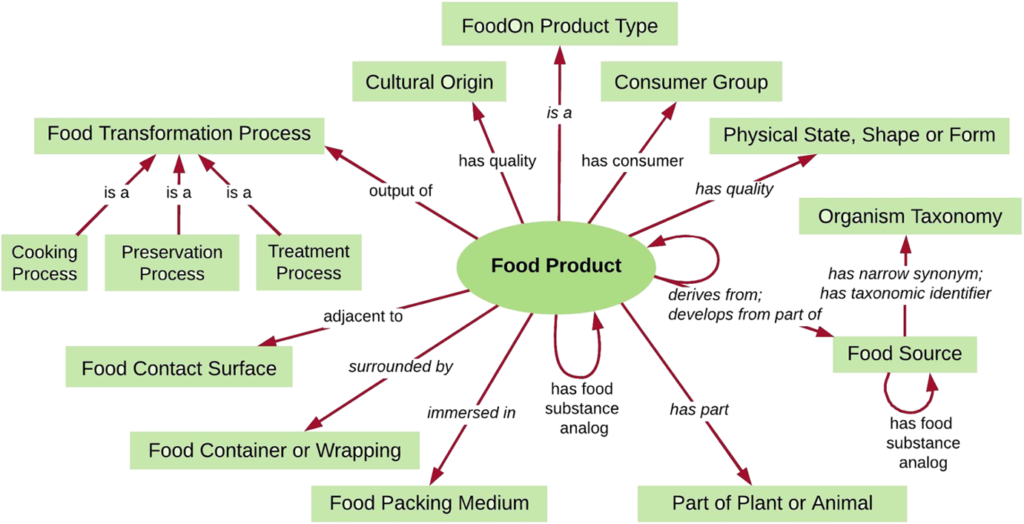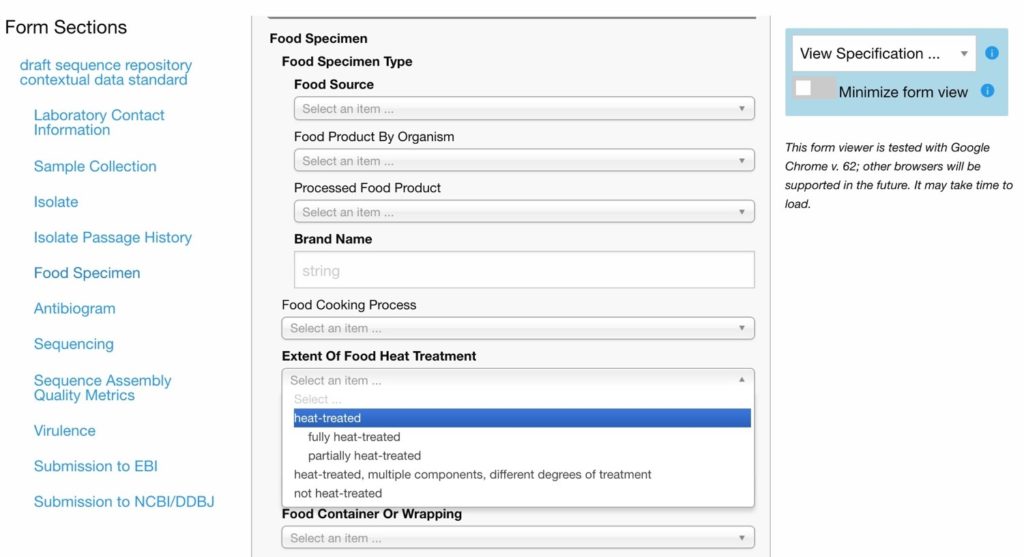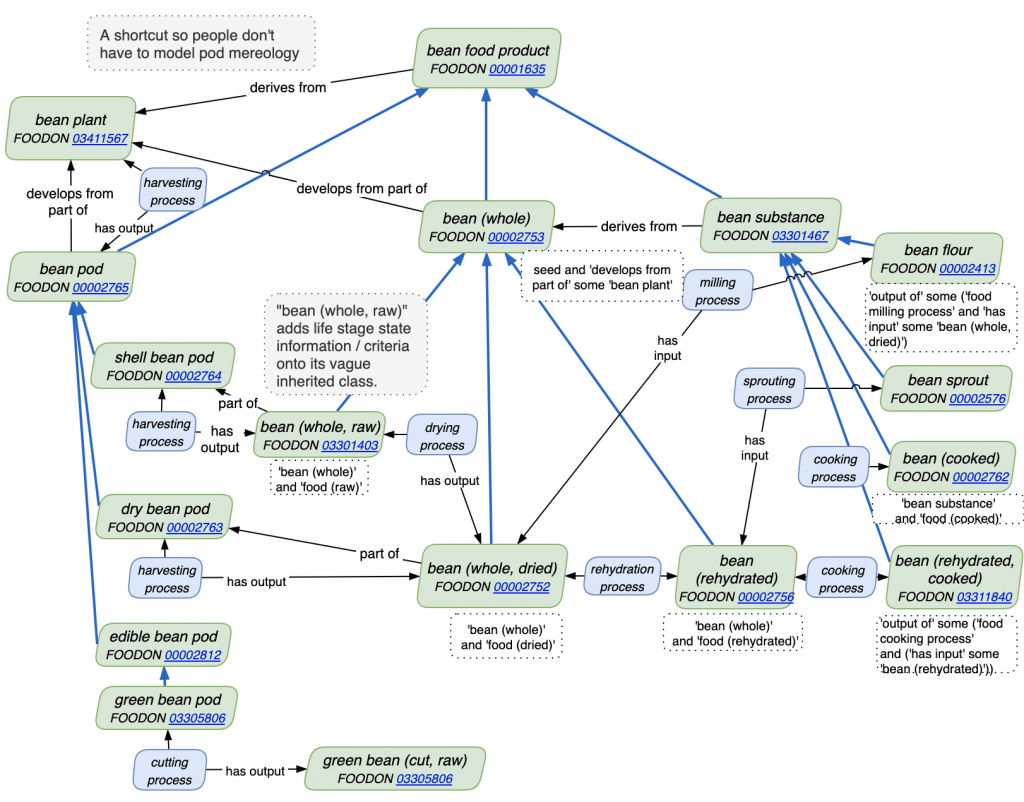Agricultural Ontologies in Use: FoodOn – A farm to fork food description ontology
The Ontologies Community of Practice is engaged in the development of ontologies for agricultural research. In a series of blog posts, we’ll take a look at ongoing ontologies projects and developments.
FoodOn is based on the LanguaL™ Food Description Thesaurus, originating in the late 1970s as the “Factored Food Vocabulary” by the Center for Food Safety and Applied Nutrition (CFSAN) of the United States Food and Drug Administration, and later adopted by the European LanguaL™ Technical Committee which supports EuroFIR partner national food nutrition databases.
All of LanguaL™’s 14 facets of food description have been transformed and mapped into FoodOn ontology branches of vocabulary.
FoodOn is a member of the Open Biological and Biomedical Ontology Foundry (OBOFoundry), a collective of ontology developers that are committed to collaboration and adherence to shared principles, including orthogonal reuse of each other’s’ ontology terms and relations rather than the creation of terms with duplicate semantics.
FoodOn contains many CHEBI chemical terms, UBERON and PO anatomy terms, and dataset description elements are being reused from the Ontology for Biomedical Investigations (OBI) and the Information Architecture Ontology (IAO).
Additionally, all member ontologies aspire to be compatible with the Basic Formal Ontology (BFO). As FoodOn can be confusing to navigate because it has BFO classes at the top of its hierarchies, the FoodOn website provides an overview of where terms are clustered, as well as a discussion of how food is modeled and curated.
FoodOn was initially motivated by the need to create a standard for the reporting of foodborne disease epidemiology investigations that would be attractive to agencies like US and Canadian centres for disease control and is indeed being adopted by agency projects like NARMS, and GenomeTrakr, and is being used to match IFSAC categories.
Representatives from UN FAO INFOODS are encouraging FoodOn to map to their vocabulary, and other agencies such as EFSA and USDA are engaging with the FoodOn team about how to bring ontologies into their data management practice.
Partner ontologies have emerged in the last two years which add to OBOFoundry research domain coverage of food chemistry and nutrition, including the Food Biomarker Ontology (FOBI), and the Ontology for Nutritional Studies (ONS), MEATyL@b project, and the upcoming Food Interactions with Drugs Evidence Ontology (FIDEO). Many foods in the USDA SR Legacy database have been indexed to the LanguaL™ food description facets, but as the FoodOn paper details, ontologies can go much further in adding structured information to food description.
The FoodOn curation team is developing basic models for plant and animal food product representation, diet, nutrition, and additives, as the following model of bean products illustrates.
FoodOn is augmenting its class structure to distinguish between single-source and multi-source foods. Generally, all single-source foods will be positioned under FoodOn’s “food by organism” branch. The remainder of its growing product hierarchy of over 9,600 food items (which originated from the LanguaL™ indexed SIREN food database, a comprehensive list of mainly North American food items) exist under a “multi-component food” category.
For a full-spectrum discussion, the FoodOn team is promoting a day-long “Integrated food ontology development for agricultural, food science and public health domains” workshop at the 11th International Conference on Biomedical Ontologies 2020 in Bolzano Italy, held as part of the overall Joint Ontology WOrkshops (JOWO) 2020 event. For a description of session content, please click here.
May 6, 2020
Damion Dooley
Scientific Programmer and Ontology Developer
The University of British Columbia
Latest news








